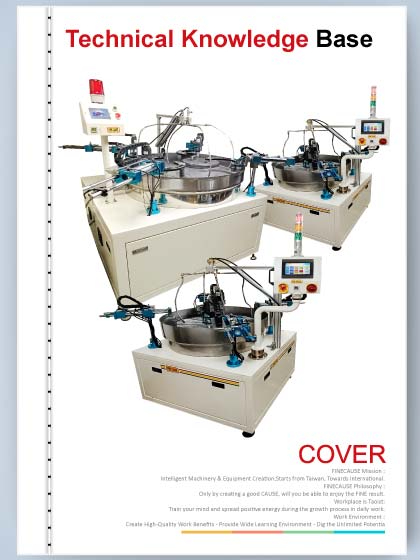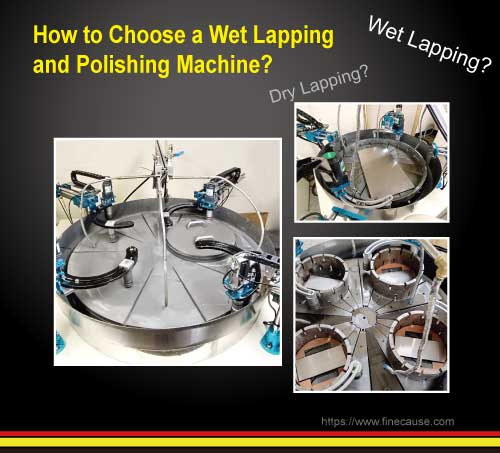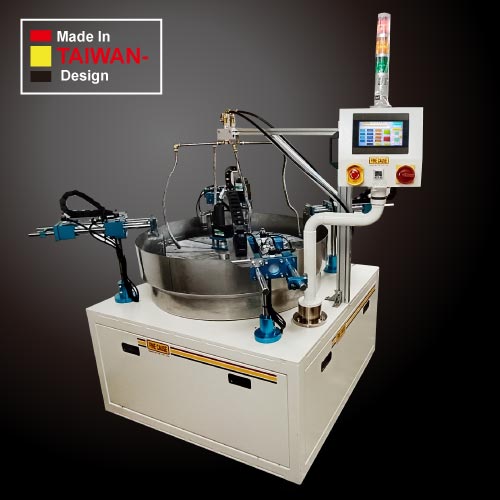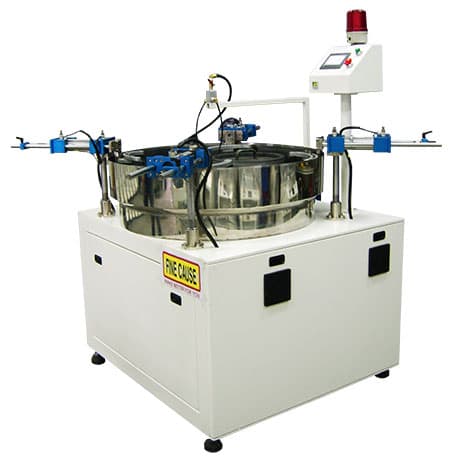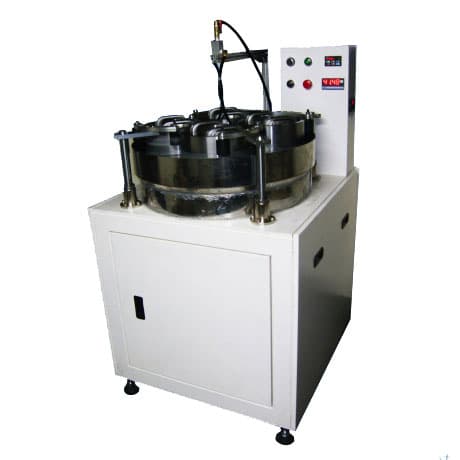Reference
How to Choose a Wet Lapping Machine/Lapping Polishing Machine?
| Filename | How to Choose a Wet Lapping and Polishing Machine.pdf |
| File Size | 525.1KB |
| Revision Date | 2025/07/28 |
How to Choose a Lapping Machine/Lapping Polishing Machine?
In the fields of precision machining, mold processing, and surface treatment, lapping and polishing is an indispensable manufacturing process. Especially in areas requiring high flatness and mirror finish—such as pad printing steel plates, ceramic components, and semiconductor parts—wet lapping and polishing machines are core equipment.
This article starts with the basic principles of wet polishing, explains the differences between wet and dry methods, analyzes typical applications, then introduces important considerations when choosing a polishing machine. We also share some practical wet lapping and polishing machine recommendations for your evaluation.
What is Wet Lapping and Polishing?
Wet lapping involves using liquid abrasive media (such as water, lapping oil, or polishing solution) combined with abrasive powders during the lapping/polishing process to reduce heat effects, improve uniformity, and prevent dust formation.
Advantages of Wet Lapping:
-
Reduces high heat during machining and prevents material deformation
-
Produces smoother and more uniform surfaces on steel plates or products
-
Environmentally friendly—no dust hazards
Common Combinations:
-
Diamond abrasive powders
-
Self-adhesive polishing pads
| Understanding the Differences Between Wet and Dry Lapping | ||
|---|---|---|
|
Item
|
Wet Lapping | Dry Lapping |
| Processing Temperature | Low, less risk of deformation √ | High, risk of burns |
| Surface Finish | Smoother and more uniform √ | Prone to scratches, may require reprocessing |
| Environmental Impact | No dust issues √ | Generates dust, requires protective equipment |
Three-Stage Lapping and Polishing Process (Taking Pad Printing Steel Plates as Example)
1️. Coarse Grinding: Wheel-type Surface Grinder as the first stage in the process, the primary goal of coarse grinding is to quickly remove the oxidation layer and surface damage left by cutting. This step typically uses a surface grinding machine with a grinding wheel to level large areas, laying the foundation for fine lapping and polishing.
2️. Fine Lapping: Diamond Wet Surface Lapping Machine in the fine lapping stage, fine-grit diamond abrasives and wet lapping fluid are used for high-precision treatment, further removing deep scratches left by coarse lapping and improving flatness and parallelism. This step is crucial for microscopic inspection, sample reliability, and downstream quality.
3️. Mirror Polishing: Wet Polishing Machine with Pads and Compounds Polishing is the final step, aimed at completely removing micro scratches from fine lapping and achieving a mirror-like surface finish. This is commonly performed with polishing pads and aluminum oxide powders or specialty liquids—ideal for applications demanding extremely high surface quality, such as contact lens molds or semiconductor substrates.
| Grinding vs. Lapping Comparison | ||
|---|---|---|
|
Item
|
Grinding | Lapping |
| Purpose | Rapid material removal and size correction | Improve surface flatness and finish |
| Material Removal | Higher amount, high efficiency | Small amount, finely controlled |
| Surface Accuracy | Moderate, may leave visible scratches | High precision, fewer and more uniform scratches |
| Application | Initial rough machining, heavy stock removal | Precision machining, mirror-finish requirements |
| Abrasives Used | Grinding wheels, coarse abrasives | Abrasive slurry (e.g., Green Silicon Carbide) |
| Typical Uses | Preliminary shaping of steel plates, mold adjustment | SKD11 steel plate re-lapping, wafers, optical glass, ceramics |
How to Choose the Right Wet Lapping and Polishing Machine?
Depending on the industry and processing needs, considerations for selecting a wet lapping machine typically include:
-
Material Types: Metal or non-metal, with or without heat treatment
-
Work Size & Batch Volume: Machine compatibility and level of automation
-
Abrasive/Polishing Pad Replacement: Ease of maintenance and design optimization
-
Multi-mode Operation: Supports synchronized, sequential, or independent movement
-
HMI Interface & Multi-language Support: For intuitive, efficient operation
🔩 The Importance of Pressure Mechanisms in Polishing Quality
In polishing, the type of pressure application significantly affects the end result. Different pressure systems suit different materials and shapes. Whether it's a semiconductor wafer requiring extreme flatness or irregularly shaped metal parts, choosing the right pressure method ensures quality and consistency.
The two most common pressure systems in polishing machines are pneumatic pressure and iron block pressure. Below are their differences and applications:
✅ Customized Pneumatic Pressure System (for High Precision Applications)Pneumatic systems provide stable, even pressure—perfect for electronics and semiconductors. Adjustable air pressure ensures precise control of each polishing cycle, enabling consistent, high-quality results.
📌 Advantages: Precision control, ideal for mass production and inspection
✅ Iron Block Pressure (for General Parts & Custom Weight Adjustments)Standard polishing equipment often uses weighted iron blocks. The thickness and weight can be adjusted based on the part. This method is simple yet effective, especially for irregular or large surface parts, and allows easy control over lapping depth.
📌 Advantages: Simple design, flexible use, easy maintenance
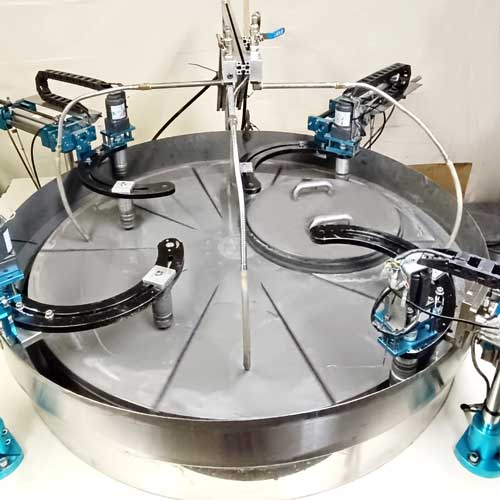
🎯 Choosing the Right Pressure System Boosts Efficiency & QualityMatching the pressure system to your material and process ensures stability, repeatability, and excellent polishing outcomes. Both systems enable consistent performance for inspection, analysis, and further processing.
Recommended Machine: FC-Steel-Lapping Machine/Lapping Polishing Machine
This professional wet lapping and automatic polishing machine handles workpieces up to 400×600mm. Suitable for high-precision processing of various materials including metals, SKD11 steel plates, ceramics, and glass. Designed for advanced manufacturing.
High-precision lapping for multi-material workpieces
Uses iron block pressure by default; customizable for pneumatic cylinders
FC-Steel-Lapping Machine is a fine lapping machine using diamond abrasives, capable of high flatness and mirror polish for SKD11 steel, ceramics, crystal materials, mobile parts, and more.
Recommended Machine: FC-Steel-3-Automatic Lapping and polishing machine/Lapping equipment (medium size)
Designed for medium-sized parts, supports wet precision lapping/polishing for various metals and non-metals.
FC-Steel-3 Automatic Lapping and polishing machine is a diamond abrasive wet flat surface lapping machine ideal for SKD11 steel plates, ceramics, chips, aluminum parts, etc., offering excellent flatness and roughness control.
-
Uses iron block pressure (customizable to pneumatic)
-
4 adjustable working rings: set to single, double, or four-part simultaneous processing
-
Multiple motion modes: synchronized, sequential, independent
-
Max workpiece size: 480×280mm
-
Adjustable forward/backward delay time and rotation speed
-
Suitable for advanced production
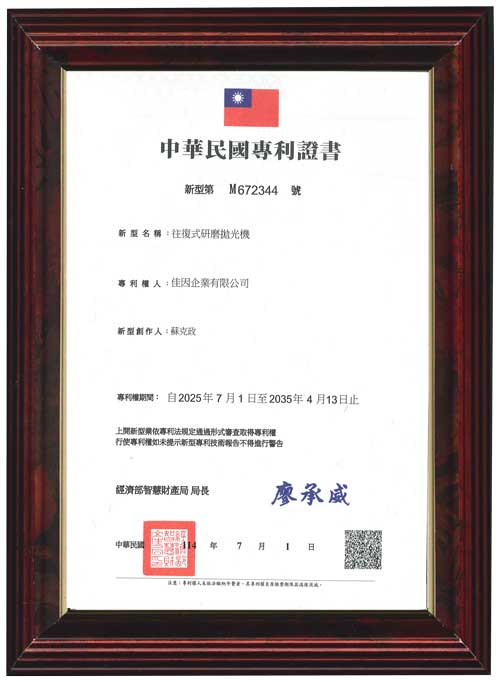
Fine Cause Patented Design Advantage:Patent Certificate (Taiwan): Reciprocating Lapping & Polishing Machine, Utility Model No. M672344
💼 Recommended Machine: FC-Steel-2 Lapping Polishing Machine(Small-Scale )
Compact and efficient—720mm diameter plate designed for steel plates and precision components.
Can process 4 pieces of 90×200mm steel plates or 2 pieces of 120×240mm plates at once (depending on ring selection).
Reusable pad printing plates: Old patterns can be lapped off for reuse, reducing costs and waste
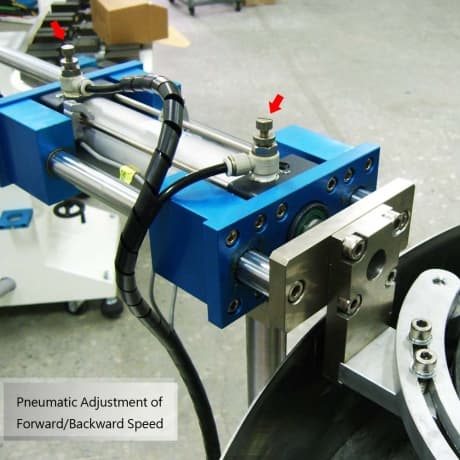
Uses iron block pressure (customizable to pneumatic)
Ideal for steel plate recycling
Fine Cause developed the FC-Steel-2 based on semiconductor and polishing expertise—making re-lapping efficient and easy.
Compatible with materials including:Heat-treated SKD11, ceramics, sapphire, mobile components, watch glass, tungsten carbide, silicon, etc.
All three machines are independently developed by Fine Cause, tested in real production with proven results. They offer high efficiency, precision, and full control—ideal for modern manufacturing.
✅ Conclusion: The Right Lapping Machine Delivers Instant Results
Whether you're upgrading your in-house process, prototyping, or outsourcing production, understanding wet lapping principles, benefits, and selection criteria helps you choose the best equipment.
Whatever machine you select, Fine Cause provides quality products and service to ensure a more efficient and stable production process.
Click the product names above to view full descriptions—or contact us to learn more!
👉 [Related Article] What Are Wet Grinding Materials? Learn the Key to High-Efficiency Polishing
...For the complete color image file, please click the Download button.


 Links
Links